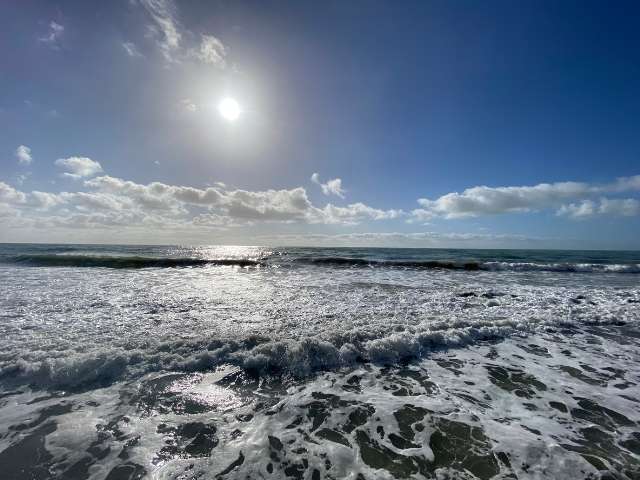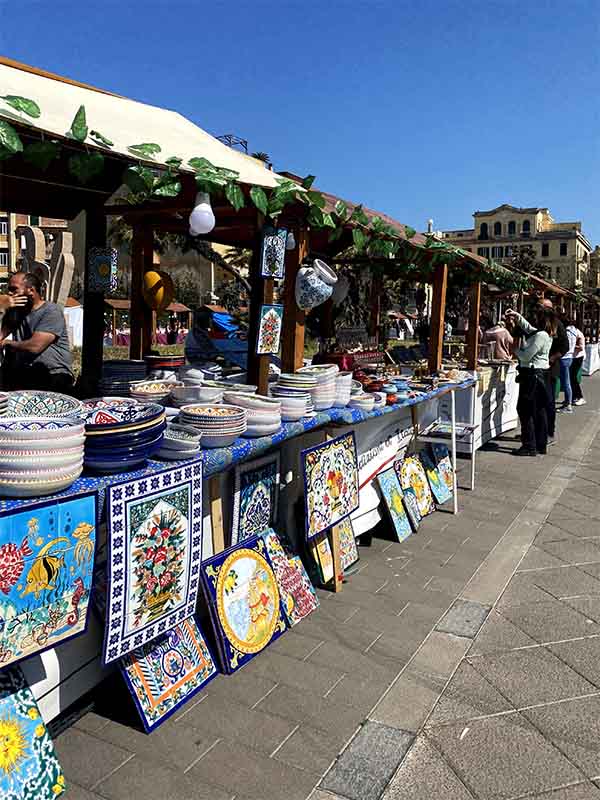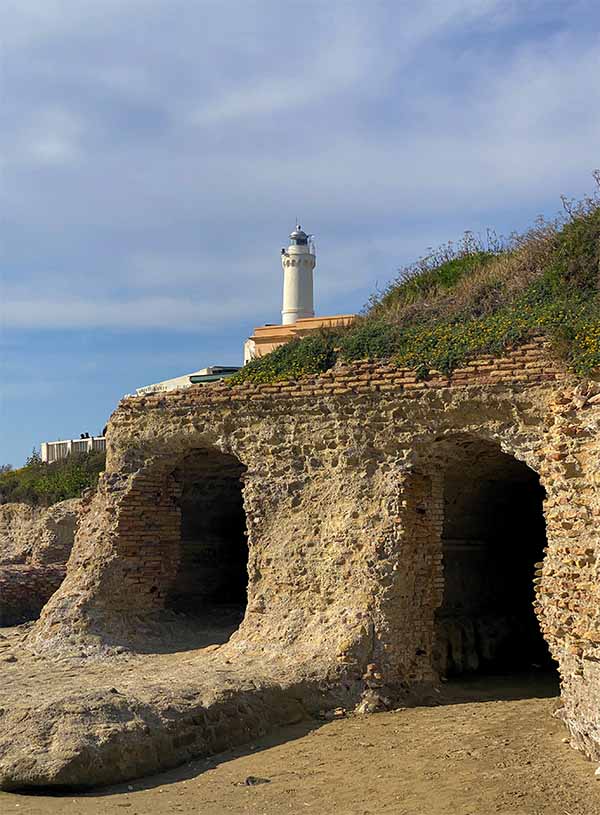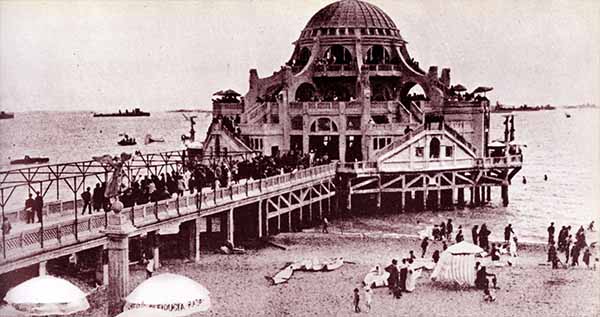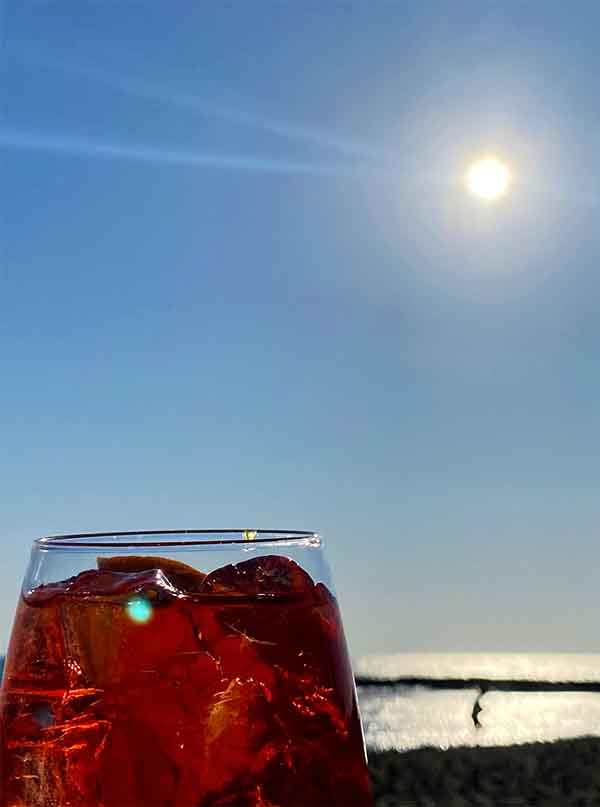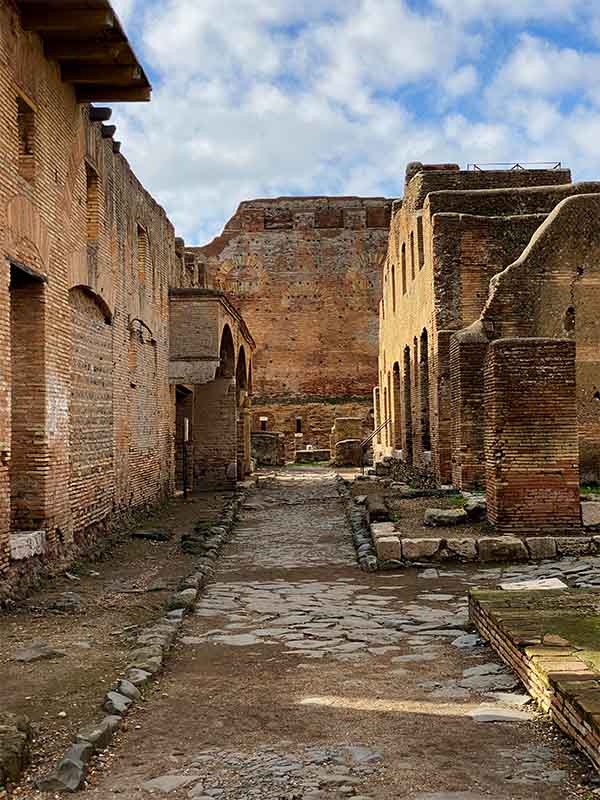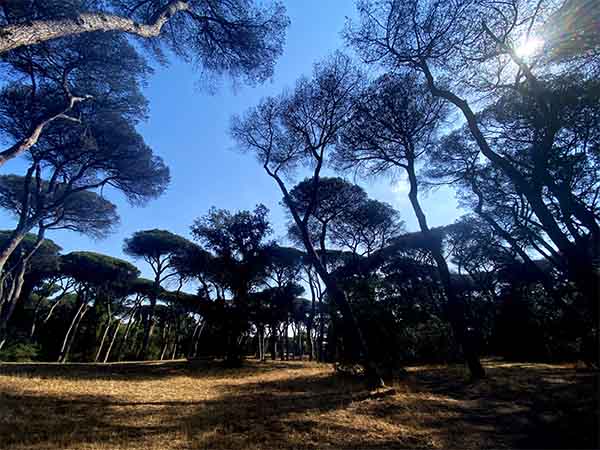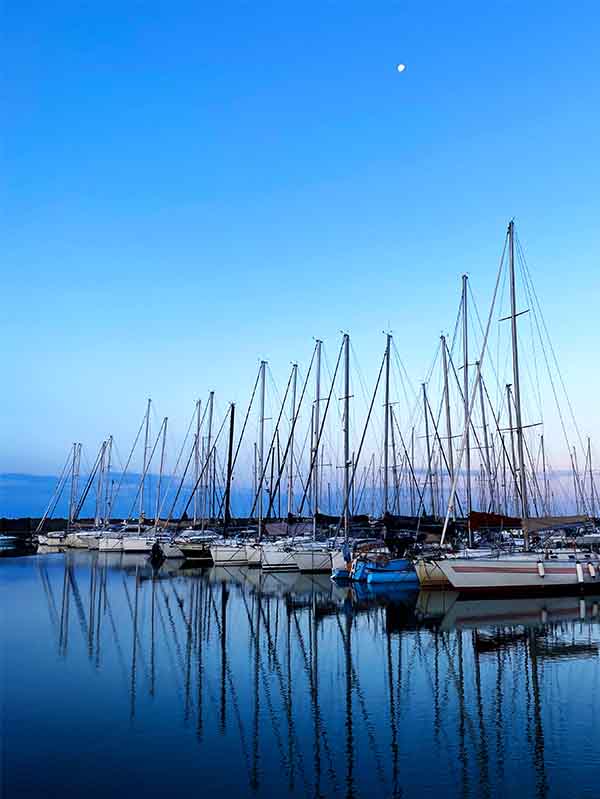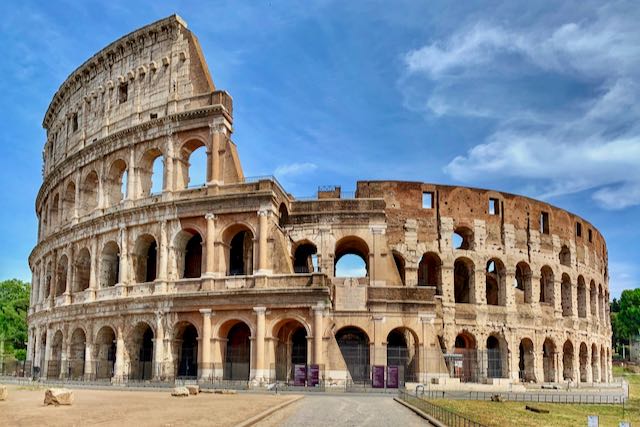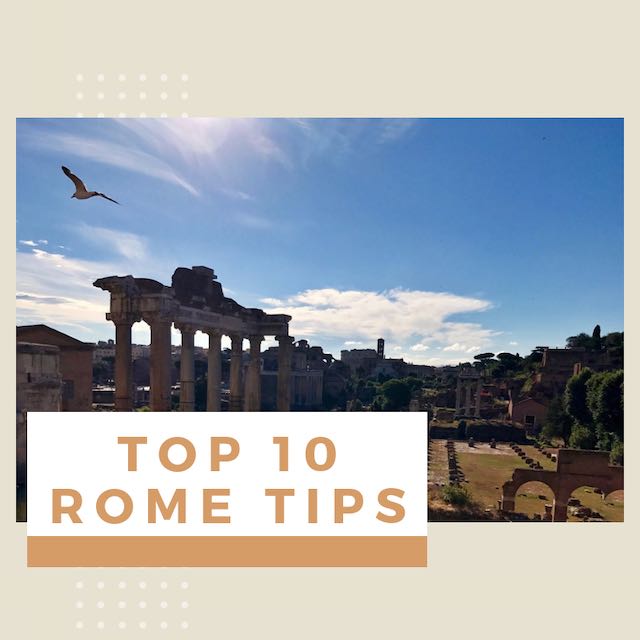- Sign up & get a FREE ebook Subscribe NOW!
- Romewise Home Page
- What to Do in Rome
- Lido di Ostia
Lido di Ostia - Visit Rome's Port & Beach
Did you know Rome is technically a coastal city?
After a short journey from the historic center you can find yourself at Rome’s official port on the Mediterranean sea.
On this page you will find answers to:
- What is Ostia Lido?
- Where is Lido di Ostia in Rome?
- What is the history of Ostia Lido?
- Why visit Ostia Lido?
- How to get to Lido di Ostia in Rome
- When to visit Ostia Lido
- What can you see and do in Ostia Lido?
- Where to eat and drink near Lido di Ostia
What is Ostia Lido?
Lido di Ostia (often referred to simply as ‘Ostia’) is the main town in Rome’s tenth municipality, with the whole Ostia area being home to around 80,000 people (via Wikipedia, 2016), including myself and my girlfriend since August 2021!
It is located on the coast of the region of Lazio, approximately 25km (as the crow flies) from the historic center of the Eternal City and 10km from Rome’s main airport at Fiumicino.
Where is Lido di Ostia in Rome?
Ostia Lido is located approximately 25km from Rome (as the crow flies).
An important distinction is that the modern town of Lido di Ostia is not where the ancient Roman town of Ostia was located – in fact, during ancient times, the area where the modern town is was underwater!
Over the centuries, geographic changes and government land reclamation resulted in the coastline changing. It is now 2.5km further south-west, compared to where it was during ancient times.
Nearby Ostia Lido, and outside of Rome’s historic center you’ll find the following points of interest:
- Ostia Antica town and archeological park (10 minutes by car or train)
- Fiumicino town and airport (15 minutes by car) - there are direct buses to and from the airport from Ostia’s main train station ‘Lido Centro’.
- Anzio & Nettuno – home to the Sicily-Rome American Cemetery and Memorial for Allied soldiers lost during the Italian campaign, the site of Allied landings during WW2 (45 minutes by car) and the ruins of one of ancient Roman Emperor Nero’s beach-facing summer palaces:
Ready to plan your trip?
Book your train
Planning to travel between cities in Italy and other parts of Europe?
Use Trainline to see all the different options available across the different rail companies.
Find your hotel
Find your perfect place to stay in Rome.
Use Booking.com to choose between hotels, guesthouses, and self-catering apartments in neighborhoods throughout the Eternal City.
Buy your TurboPass
Purchase the convenient Turbopass and visit all of Rome's top attractions including the Colosseum, Pantheon, and Vatican.
With one handy pass, it's all included.
🏛️ Ancient Ruins and Roman Baths 🏛️
Immerse yourself in ancient Rome’s past. Explore the grand Baths of Caracalla and the fascinating ruins of Ostia Antica to witness remnants of daily life from centuries ago.
What is the history of Ostia Lido?
The wider Ostia area has been continually inhabited for over 2600 years.
The ancient town of Ostia (now known as Ostia Antica - more on this below!) was the first official port of the city of Rome and it was also likely Rome’s first colony.
The modern town of Lido di Ostia came into its own from the end of the 1800s, when the newly unified Italian state undertook a series of land reclamation projects across the country.
Ostia was earmarked as one of the areas requiring reclamation as there had been swathes of malaria-infested lowlands and swamps here.
Specialist teams and their families relocated from the Ravenna area in Emilia-Romagna to undertake these works - they had extensive experience in such projects as their home region features a lot of wetlands, parts of which had been slowly reclaimed over the preceding centuries.
As the land was built up and extended out to sea, the modern town of Ostia Lido was built during the first decades of the 20th century - called then ‘Ostia Nuova’ - a.k.a New Ostia.
During the fascist period, Ostia Nuovo was renamed to Ostia a Mare (Ostia ‘on the sea’), but was locally known as ‘Lido di Roma’, meaning ‘Rome’s Beach’.
Skip forward a few years and in 1949, the name ‘Lido di Ostia’ was officially adopted.
Much of the architecture - a combination of Italian rationalism and Roman neoclassicism - from Ostia’s early history is still visible in the town.
However, some key examples such as the grand pier pictured above (inspired by piers such as the one at Brighton in the UK) were destroyed by retreating Fascist forces in 1943.
Following WW2, Ostia grew substantially from a small village on the outskirts of Rome to a large town/mini-city.
It quickly became a popular destination for Italian tourists (and still is!), and in more modern times started to attract international visitors for its proximity to Fiumicino airport and the Roman ruins at Ostia Antica.
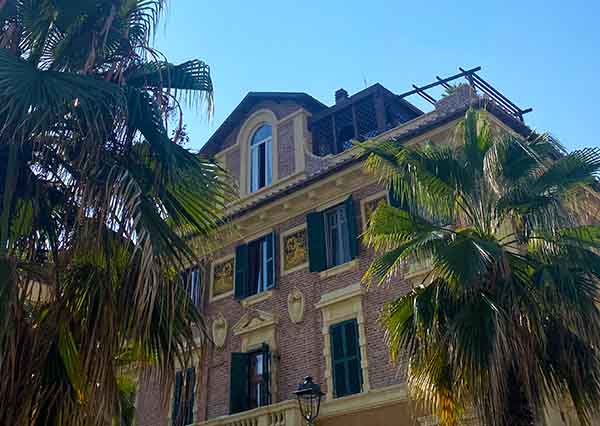 Throughout the center of Ostia you’ll see the distinctive architectural style used here during the expansion of the town in the early 20th century.
Throughout the center of Ostia you’ll see the distinctive architectural style used here during the expansion of the town in the early 20th century.Prior to Lido di Ostia, the main town in this area was Ostia Antica - located less than 3km from Ostia Lido (inland).
Today both the modern town and the adjacent ancient Roman ruins are known as Ostia Antica.
During the time of the Roman Republic and Empire, Ostia Antica (referred to back then as just ‘Ostia’) was the main port of Rome (along with Portus, located on the opposite side of the river Tiber outlet to the sea).
Today the ruins of Ostia Antica can be visited and offer visitors an insight into a lost world – visit it for yourself and discover the fascinating history of the ancient port on this guided tour.
The name ‘Ostia’ is derived from the Latin word ostium which means mouth or entrance - so called because of Ostia’s position as one of the entrances to Rome for travelers, and also because of the mouth of the Tiber river nearby.
Why visit Ostia Lido?
Full disclosure; I have lived in Lido di Ostia since August 2021 and love it!
Like with all Romewise content, if we didn’t wholeheartedly believe in our recommendations, we wouldn’t publish them.
There are several reasons why you should consider visiting Ostia Lido:
- Proximity to the sea; if you arrive in Lido di Ostia by train, it’s an easy 10-minute walk to the where you can relax at one of the many beach clubs or bars, or enjoy a range of watersports.
- The history; the history of both Ostia Lido and nearby Ostia Antica is fascinating – the former for its 19th and 20th century history and architecture, and the latter for its ancient Roman site.
- The food and drink scene; in Ostia Lido, you are spoilt for choice when it comes to where you should eat and drink – the value is far better than the center of Rome, and on the whole the quality and authenticity remains just as good.
Keep reading to find out more!
Personally I would consider the archeological park at Ostia Antica as interesting and enjoyable to visit as Pompeii and Herculaneum. One big draw that Ostia Antica offers over Pompeii (aside from the fact it is super easy to get to from central Rome) is that it's very rarely busy; I visit often and it's unusual to see large groups or crowds. This makes for an enjoyable visiting experience where you can really explore the site.
How to get to Lido di Ostia in Rome
Getting to Ostia Lido couldn’t be easier!
The best way to get to Lido di Ostia is to use the train line from the Porta San Paolo/Piramide station in central Rome, which is adjacent to the Metro B line and multiple buses.
These trains go multiple times per hour with a journey time of around 30 minutes, starting early in the morning and ending just before midnight, making a full-day visit more than achievable.
This train line is regularly being maintained and therefore I would recommend checking its status before setting off to Ostia Lido. The best place to get live public transport updates for this line is via the X account for Cotral (the company that manages a lot of Ostia's transport network) here.
This train line is part of Rome’s metropolitan public transport network so you only need a regular 1,50€, 100 minute travel ticket (two tickets required for a round trip)!
For more info about Rome’s public transport, visit our dedicated page here.
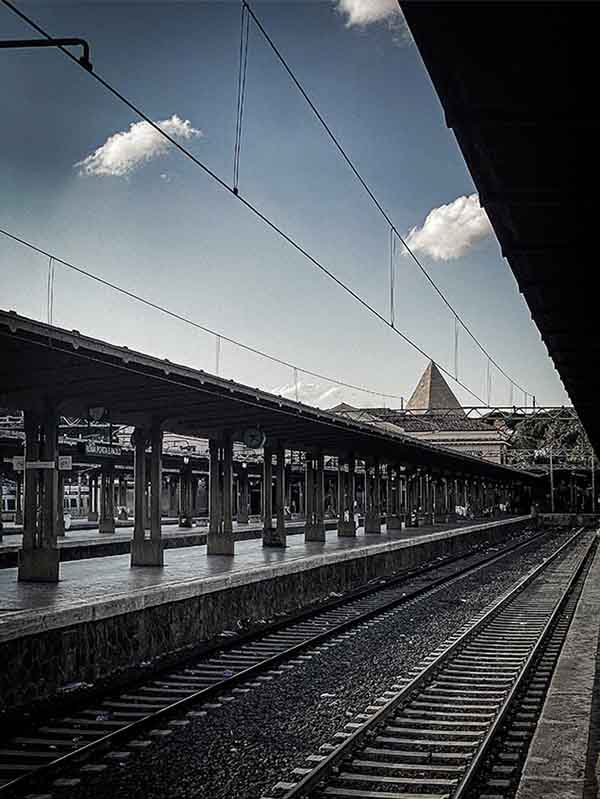 The ‘lido line’ starts and ends at the Porto San Paolo station in the center of Rome, adjacent to the Pyramid of Cestius seen here in the background from the station’s platforms.
The ‘lido line’ starts and ends at the Porto San Paolo station in the center of Rome, adjacent to the Pyramid of Cestius seen here in the background from the station’s platforms.Another option of course is to drive – Ostia Lido does not feature a limited traffic zone which restricts access, and as the town follows a modern grid-layout, the roads are easily navigable.
Public parking in Ostia is almost always free – for easy access to the beach and the restaurants in the town center area, I’d recommend parking centrally.
Getting a taxi to and from Ostia Lido from Rome is also super straightforward.
You should budget between 60€ and 90€ per trip (120€-180€ for a round trip) depending on your exact location if starting your journey in central Rome.
I would recommend using this Ostia-based company (you can reserve via email in English) who I have found offer the most competitive prices and a high level of customer service.
Looking for an easy way to get to Ostia Antica? Book this half-day tour which includes a pick-up and drop-off service from your accommodation!
When to visit Lido di Ostia
As Ostia Lido is a normal town you can visit at any time of the year.
However, as Ostia’s local economy is tourism-heavy (mostly Italian tourists, and in particular, Romans visiting to go to the beach at weekends and during the summer months!), a lot of restaurants, bars and shops close, or limit their hours ‘out of season’.
There are no fixed dates for these closures as it depends on the weather and national holidays.
As such, to make the most of any visit to Ostia Lido I would recommend visiting between mid-May and the end of September.
Ostia’s weather, while similar to Rome, is differentiated by two things:
- The temperatures in Ostia are often slightly lower compared to Rome, owing to the lack of city humidity and the feature of an almost ever-present cool and light breeze from the sea
- It rains less frequently in Ostia - unsettled weather often forms near Ostia where the cool sea air meets the warmer land air, but by the time it's ready to rain, often the clouds have moved inland (helped again by the previously mentioned breeze!)
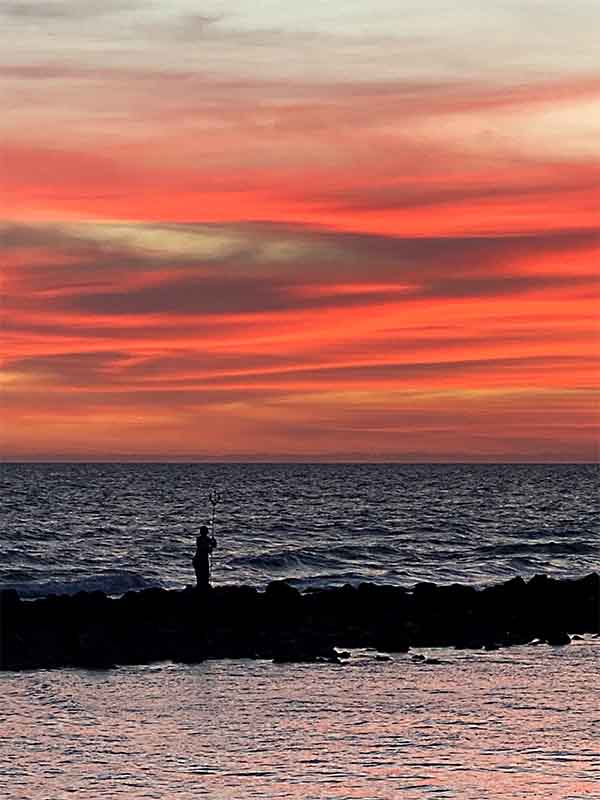 If there is one thing that is guaranteed in Ostia, it’s incredible sunsets - this picture was taken on a chilly February evening.
If there is one thing that is guaranteed in Ostia, it’s incredible sunsets - this picture was taken on a chilly February evening.For the above reasons, we are fortunate in Ostia to have consistently good weather – one of the main reasons I love living here, as someone who moved to Italy from the UK!
For recommendations on what to pack when visiting Ostia and Rome, refer to our dedicated page here.
Worst case, if you forget to bring something, there are plenty of shops to grab essentials in!
No matter what season you visit Rome, here are 4 essential things we recommend never leaving home without:
Disclosure: If you make a purchase through a link on this page, I may receive a small commission - at no extra cost to you. Thank you for supporting my site!
What can you see and do in Ostia Lido?
Ostia Lido offers a range of things to do for a visitor - you certainly won’t be bored here if you make a day trip from the center of Rome! Here are my top recommendations:
If visiting during the summer months, head to the beach!
There are multiple ‘free beaches’ where you can set up wherever you want without charge (not always the case in Italy).
However, I’d recommend going to a beach club - for a small cost you can hire a comfortable lounger for the day (on average 9€ per person) with the option of adding an umbrella/parasol (at an extra cost) - a must at the peak of summer!
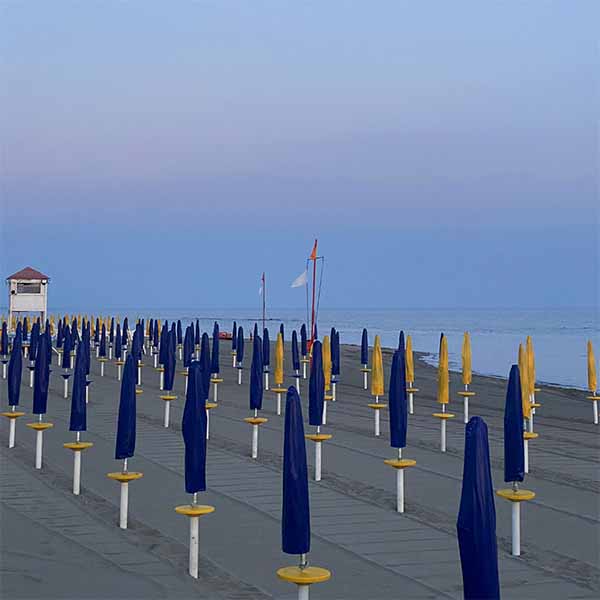 Beach pitches ready for visitors - most of Ostia’s beaches will look like this in the summer, but there are also several free sections.
Beach pitches ready for visitors - most of Ostia’s beaches will look like this in the summer, but there are also several free sections.Elyssa, Romewise’s founder - recommends Gambrinus and for myself, it’s always Bahia.
However, all beach establishments in Ostia are worth considering as the local government keeps a close eye on the businesses they issue operating permits to, ensuring they maintain a high level of service.
Eat and drink - you are spoiled for choice for great venues in Ostia! Click here to jump to the next section where I detail some of my favorite spots.
Shopping - while not offering the same level of choice as the center of Rome, you’ll find a handful of designer boutiques and shops in Ostia, as well as a vibrant market scene - particularly at the weekends.
Within 25 minutes driving distance you’ll also find the Castel Romano Designer Outlet which features 100s of shops with many of the same high-end brands you’ll find in the center of Rome.
Walking/hiking/biking - From Ostia you’ll find several routes for exploring the nearby surroundings by foot or bike - two of my favorites are:
- The pine forest near Castel Fusano - approximately 30 minutes walk from Ostia Lido center, and then several hours of shady wooded routes available with a handful of bars and rest stops located at the park’s entrances/exits.
- The ‘lungotevere’ route which follows the banks of the river Tiber from Ostia, all the way into central Rome for those who want to/can travel that far - over 40km in total!
Water sports - if getting out on the water is your thing, Ostia is the place for you!
From boat rentals to swimming, you’ll find all kinds of aqua-activities here.
The one notable exception is surfing; the conditions in Ostia do not (generally) lend themselves to providing a good surf experience, but if you head a short distance down the Lazio coast, you’ll find several places to get out there with your board.
Of course, everything is weather dependent and seasonal, and providers change on a regular basis so I would recommend doing your research prior to arriving.
In particular, be sure to check out the Porto Turistico di Roma - the so-called ‘tourist port of Rome’ - where you’ll find an array of businesses offering boat hire, water excursions, fishing trips and more.
You’ll also find an extensive range of bars and restaurants.
🤙 Roaming in Rome? 📱
Get yourself an Italian eSIM for calls, messages and data when traveling here.
Save on data charges with plans from just 19€ from Holafly - our recommended eSIM provider - click here to find out more.
Where to eat and drink near Lido di Ostia
When I moved to Ostia I was pleasantly surprised by the range of places to eat and drink.
There is something here for everyone, with a wide variety of dining options.
Here are a few of my favorite spots:
- Bahia Beach Bar - mentioned above as it's also a beach club - here you can grab a drink, coffee or light lunch as it’s open from early morning to late-night, and watch the world go by with uninterrupted views of the Mediterranean sea. Bahia is also one of the few beach-facing bars that is open all year round - it’s open even in winter - in fact, since moving to Ostia, it's become my January 1 tradition to come here and toast the New Year!
- L’oro di Napoli - I’m a self-confessed pizza snob, and while I like thin crust style bakes, I love the thick style from Naples. If you’re like me, or just like pizza generally, this place is a must for dinner (not open for lunches). The menu offers an array of pizza topping combos, but feel free to go off menu - the team here are some of the nicest people you’ll ever meet and I can personally guarantee they’ll do everything to cater to your personal preferences.
- Agnese Bistrot - Another ‘all day’ place, you can come here at any time and expect great service and plenty of choice. The aperitivo in particular is fantastic - for just 10€ you can order a drink (of your choice) and receive a generous plate of small bites made up of whatever the kitchen is preparing that day.
- Don Pepe - I love Italian food (again, one of the reasons I relocated to Italy from the UK), but I also love Spanish food. This place is as authentically Spanish as you will find outside of Spain - the menu features all the classics and then some, and with its beach-front location, it's easy to find yourself here for many hours on a sunny afternoon or warm evening. Open for lunch and dinners, with special events including flamenco dancing at the weekends during the summer.
- Neko Sushi - Another non-Italian venue, this Japanese restaurant offers what might be some of the best sushi I’ve ever eaten - made better by the fact that they do an all-you-can-eat deal every lunch and dinner time which is exceptional value. Ordering is made easy with iPads that are fixed to every table, sending your requests direct to the kitchen - this ensures very little confusion and a fun and enjoyable experience!
Romewise's Top Travel Resources
Ready to book your trip to Rome? Take a look at these helpful links to companies we use and trust:
- Keep your travel spending simple with the Wise card, which removes all the worry about exchange rates and high transaction fees all over the world
- Search for and book your perfect accommodation
- Our complete guide to what to pack for Rome
- The number one travel accessory, a multi-point travel adapter and voltage converter
- Browse a huge range of tours in Rome and beyond
- Experience unique tours and special access to Rome's most popular sights
- Protect yourself with comprehensive travel insurance
Within this post there are some affiliate links for products and services. For more details about our affiliate policy click here.
Get your 100% free Rome trip planner now!
Simply sign-up today for our free newsletter and get the Romewise Quick Start guide to Rome:
We are committed to respecting your data. Click for our Privacy Policy.
Comments? Questions? Suggestions?
Please come over to the private Romewise Facebook group and join in the conversation.
You will often find me there, happy to answer your questions / comments!
You will also meet other Rome lovers and experts, too.
What are you waiting for?
- Romewise Home Page
- What to Do in Rome
- Lido di Ostia

